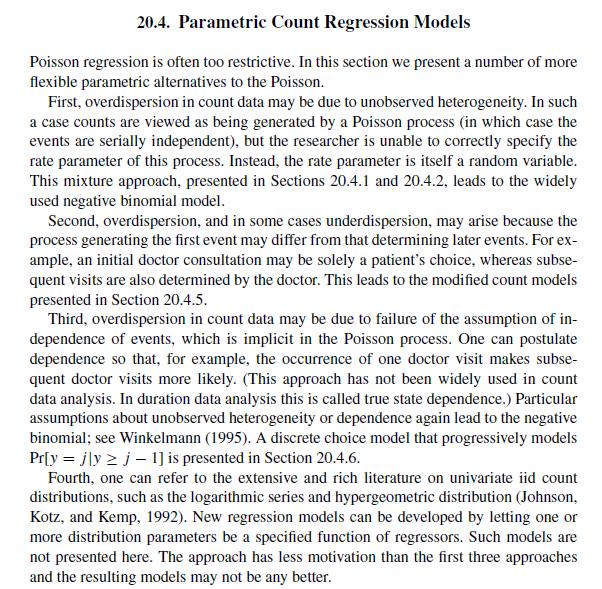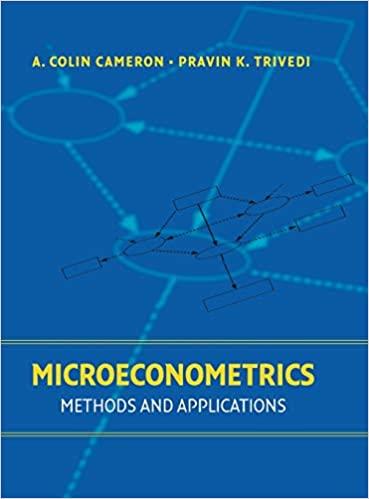Question:
Some computing packages allow you to draw both Poisson and Gamma pseudorandom numbers directly. It is also known that the negative binomial distribution can be derived as a mixture of Poisson and gamma random variables (see{Section 20.4).
(a) Write down a procedure for drawing negative binomial-distributed variables using the method of mixtures.
(b) Apply your method by drawing a sample of 10,000 on a Poisson-distributed variable with mean 0.25 .
(c) Draw a corresponding sample from a Gamma distribution with mean 1 and variance , with set to produce negative binomial random variables with variance 0.3125 .

Transcribed Image Text:
20.4. Parametric Count Regression Models Poisson regression is often too restrictive. In this section we present a number of more flexible parametric alternatives to the Poisson. First, overdispersion in count data may be due to unobserved heterogeneity. In such a case counts are viewed as being generated by a Poisson process (in which case the events are serially independent), but the researcher is unable to correctly specify the rate parameter of this process. Instead, the rate parameter is itself a random variable. This mixture approach, presented in Sections 20.4.1 and 20.4.2, leads to the widely used negative binomial model. Second, overdispersion, and in some cases underdispersion, may arise because the process generating the first event may differ from that determining later events. For ex- ample, an initial doctor consultation may be solely a patient's choice, whereas subse- quent visits are also determined by the doctor. This leads to the modified count models presented in Section 20.4.5. Third, overdispersion in count data may be due to failure of the assumption of in- dependence of events, which is implicit in the Poisson process. One can postulate dependence so that, for example, the occurrence of one doctor visit makes subse- quent doctor visits more likely. (This approach has not been widely used in count data analysis. In duration data analysis this is called true state dependence.) Particular assumptions about unobserved heterogeneity or dependence again lead to the negative binomial; see Winkelmann (1995). A discrete choice model that progressively models Prly jyj-1] is presented in Section 20.4.6. Fourth, one can refer to the extensive and rich literature on univariate iid count distributions, such as the logarithmic series and hypergeometric distribution (Johnson, Kotz, and Kemp, 1992). New regression models can be developed by letting one or more distribution parameters be a specified function of regressors. Such models are not presented here. The approach has less motivation than the first three approaches and the resulting models may not be any better.







